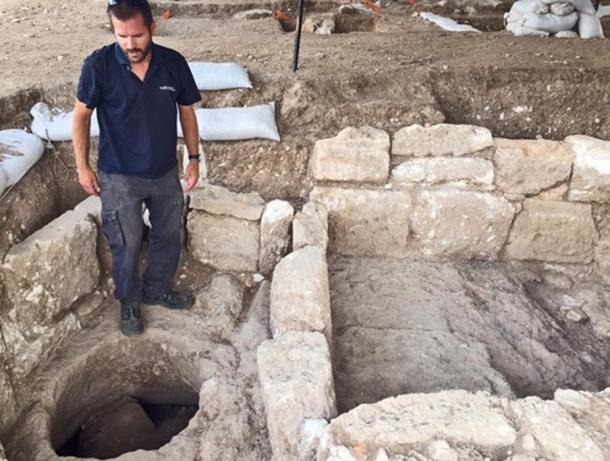1,600-Year-Old Pottery Workshop Has First Known Rock-Hewn Kiln in Israel
During the construction of a new residential quarter, north of the new Yaʽarit neighborhood, a team of archaeologists from the Israel Antiquities Authority uncovered a Roman era pottery workshop, where jars were manufactured.
The kiln, used to fire the jars, is the only one known to date in the country to have been hewn entirely in bedrock.
“What makes the pottery works so special is its unique kiln, which was hewn in bedrock and is unlike most of the kilns known to us that were built of stone, earth and mud” said Joppe Gosker, head of the IAA excavations, in a press release.

The 5 th century A.D. workshop included a system for storing water, storage compartments, a kiln, etc,
“The kiln was meticulously constructed. It consisted of two chambers – one a firebox in which branches were inserted for burning, and a second chamber where the pottery vessels were placed that were fired in the scorching heat that was generated” added Gosker.

Stone kilns were used in ancient Palestine because of the abundance of bedrock. More recently in that land such kilns have been built on hillsides, the hill forming part of the rear wall.
The kilns have been constructed of rough stones without mortar, the spaces between the stones being filled with clay but with a large open flue at the top. After the interior was properly packed with crushed limestone, a hot fire made from brush would be started in the fireplace at the base of the kiln.
The strong draft entering through a tunnel in the bottom of the kiln would carry the flames up through the limestone, heating it until it was converted into lime. This process would normally continue for several days.
“We can explain the quarrying of this rare kiln right here because of the special geological conditions found in the area of Shlomi: here there is chalk bedrock, which on the one hand is soft and therefore easily quarried, and on the other is sufficiently strong to endure the intense heat”, said Anastasia Shapiro, a geologist with the Israel Antiquities Authority who is researching the production of pottery vessels.
From the ceramic debris that was piled up around the kiln the archaeologists surmised that two types of vessels were manufactured at the workshop: storage jars that could be transported overland, and jars with large handles ( amphorae) that were used to store wine or oil which were exported from Israel by sea.

Archaeological surveys performed in Shlomi have documented remains of a royal structure with a gate – probably from the Late Roman period, which coincides with the use of the pottery workshop.
In addition, remains of the walls of buildings were identified that probably date to the Byzantine period, and as in the case of the unique kiln their builders took advantage of the natural stone in order to hew high foundations in the bedrock.
